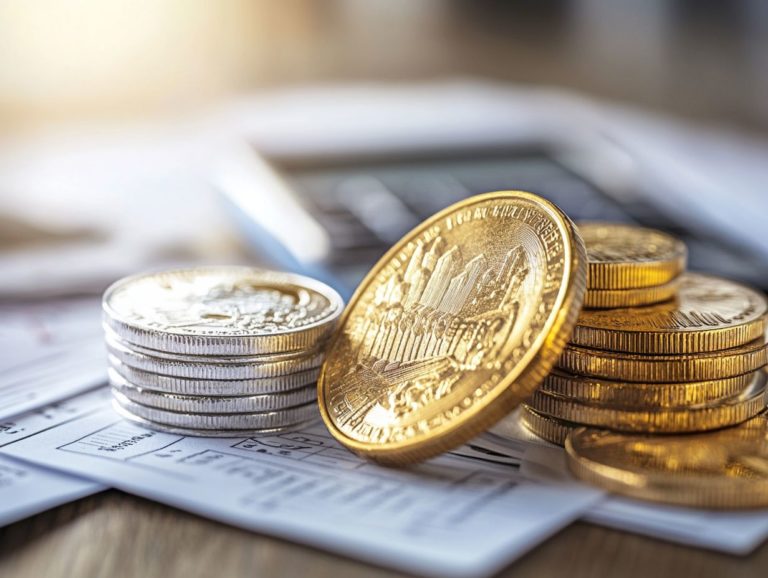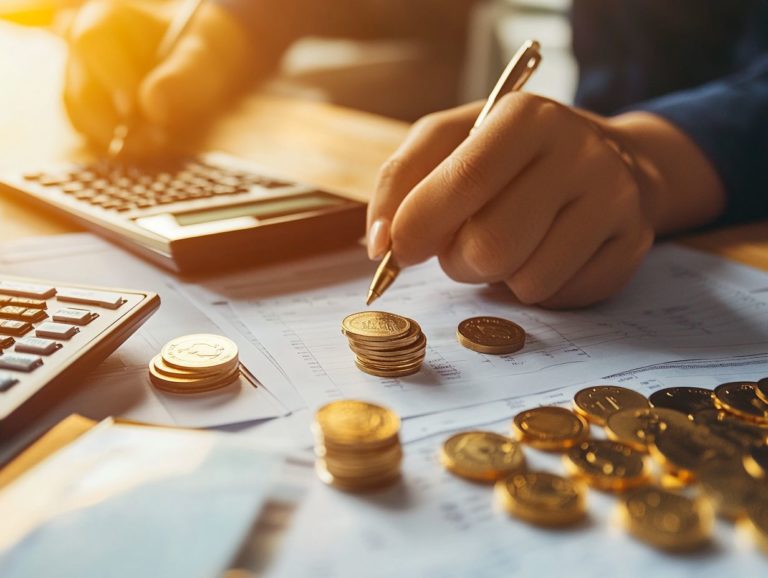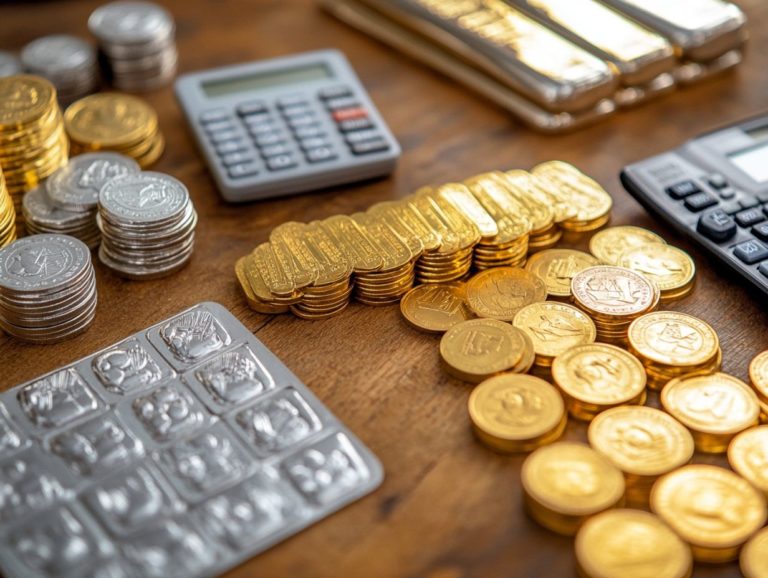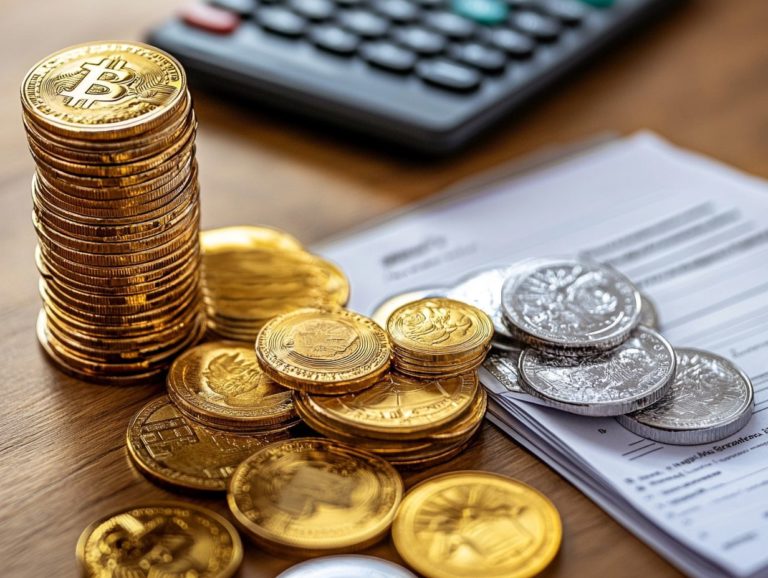The Pros and Cons of Taxing Precious Metals
Precious metals like gold and silver have long been symbols of wealth and security. Their role in the economy prompts essential questions about taxation.
This discussion delves into the multifaceted debate surrounding the taxation of precious metals. It examines arguments both for and against this practice. Proponents emphasize the potential for revenue generation and the chance to tackle wealth inequality. Critics, however, caution against potential negative impacts on the industry and unintended consequences for consumers.
You ll explore alternative approaches to achieving economic equity that don t involve taxing these valuable assets. Navigate this complex topic and uncover implications for both the economy and society.
Contents
Key Takeaways:
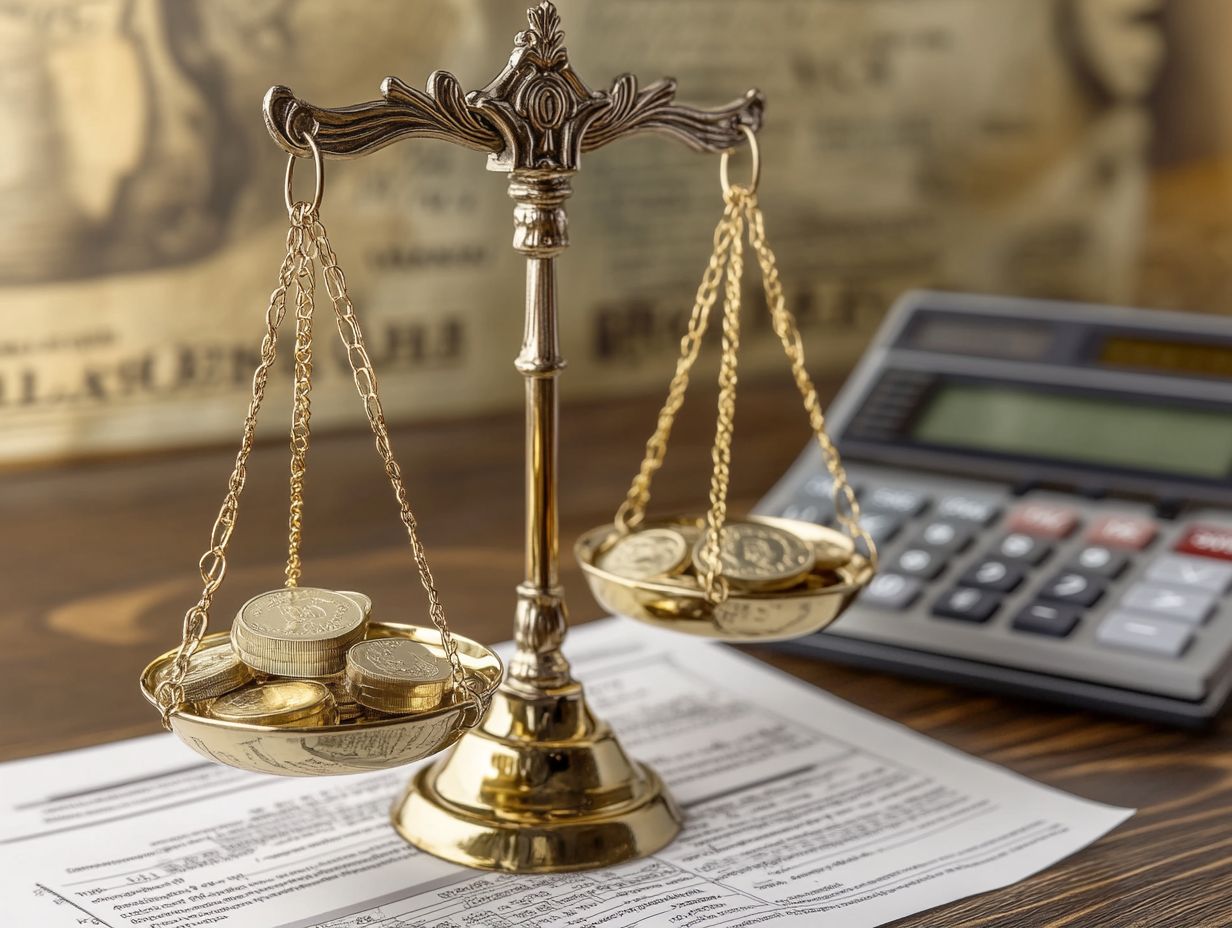
- Taxing precious metals can generate revenue and provide economic benefits for the government.
- It helps tackle wealth inequality by targeting wealthy individuals holding precious metals.
- However, taxing precious metals may negatively affect the industry and lead to unintended consequences for consumers. Exploring alternative methods may be a better solution.
Explanation of Precious Metals and Their Value
Precious metals like gold, silver, platinum, and palladium are celebrated as valuable assets. They are admired for their beauty and inherent worth in a well-rounded investment portfolio.
These metals protect against rising prices and changes in the market, making them an attractive choice for diversifying holdings.
Their reputation as safe havens arises from their ability to retain value during economic downturns. This positions them as essential components in long-term investment strategies.
Historically, precious metals have played pivotal roles in currency and trade, enhancing their allure across various cultures. Today, their applications extend beyond jewelry and decorative uses to areas like electronics, automotive industries, and medical fields.
As an investor, you recognize that incorporating these assets into your portfolio can yield profits from selling investments and improve liquidity. Understanding the significance of diversification is crucial, with precious metals serving as a steadfast anchor during tumultuous times.
Arguments for Taxing Precious Metals
There are compelling reasons for taxing precious metals, particularly regarding the potential for significant revenue generation and economic advantages. By imposing taxes on investments in gold, silver, and other precious metals, this could lead to a surge in capital gains tax revenue, fueling essential public services!
Tax implications could foster equitable investment opportunities across all socio-economic classes. This encourages wider participation in the precious metals market.
Understanding the complexities of taxing precious metals is crucial. Join the discussion on how we can balance revenue needs with industry health!
Revenue Generation and Economic Benefits
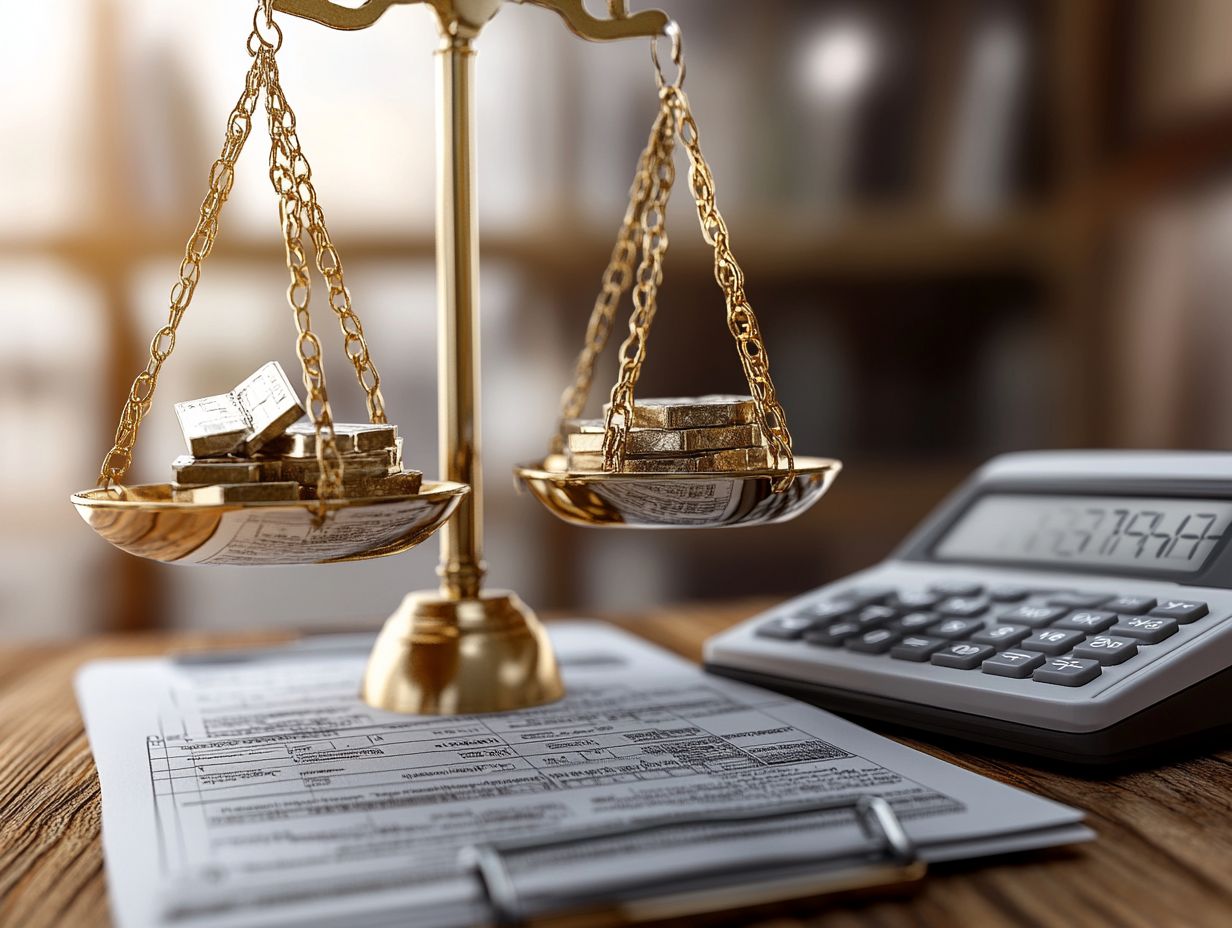
The taxation of precious metals can be an invaluable source of revenue for governments. This enables economic benefits that foster growth and development across multiple sectors. By imposing taxes on physical metals and exchange-traded funds (ETFs) tied to gold and silver, governments have the potential to tap into substantial financial resources.
These funds can then be redirected toward public services and infrastructure projects, ultimately strengthening the economy.
This financial boost can open up investment opportunities across various sectors. It attracts both local and foreign capital into industries like renewable energy, technology, and manufacturing. As firms enhance their investment portfolios with this newfound capital, a ripple effect emerges throughout the financial ecosystem, promoting job creation and invigorating consumer spending.
By implementing taxes on precious metals, governments can create a more balanced tax framework that encourages the diversification of assets while nurturing investor confidence. This strategy can ultimately lead to a more stable economic environment, benefitting everyone involved, especially when considering the pros of investing in paper assets.
Addressing Wealth Inequality
Taxing precious metals can be a key strategy in addressing wealth inequality. It promotes a more balanced economic landscape by redistributing wealth from affluent investors to the public sector. This approach can effectively narrow the gaps that exist in society, as it funds social programs and initiatives aimed at supporting disadvantaged communities.
It’s crucial to consider the tax implications of investing in precious metals, along with understanding the pros and cons of physical assets, to ensure that your actions contribute positively to bridging the wealth gap.
Advocating for a sensible tax structure on these assets is vital. This enables policymakers to create a system where the wealth generated from precious metals serves as a resource for vital services like education, healthcare, and infrastructure, ultimately enhancing social equity. Different classes of investors, from wealthy collectors to everyday individuals, would encounter varied tax burdens, potentially leveling the playing field. For those considering investment options, understanding the pros and cons of gold IRAs can be crucial.
These measures must incentivize responsible investing now. They can also channel funds into programs specifically designed to uplift marginalized communities, fostering economic opportunities and stability where they are most urgently needed.
Arguments Against Taxing Precious Metals
Despite the potential benefits, substantial arguments exist against taxing precious metals. These arguments primarily focus on the negative impact such policies could have on the market and the investment landscape.
Critics contend that imposing taxes on gold, silver, and other precious metals might deter investment. This could result in decreased liquidity and heightened market volatility, undermining the stability of precious metals as a safe haven asset. Additionally, understanding the risks of home storage ultimately jeopardizes investors who depend on these metals for income generation and long-term gains.
Potential Negative Impact on Industry
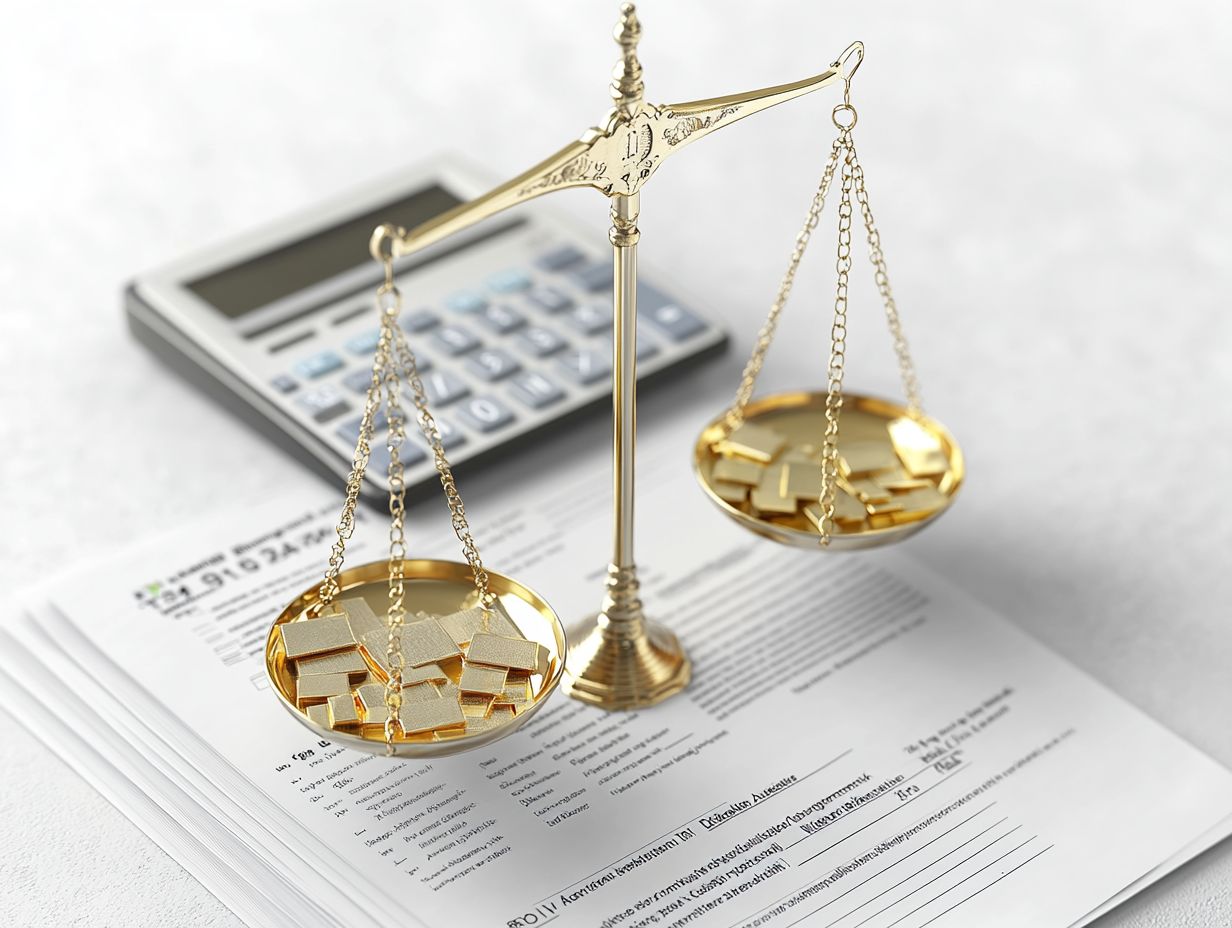
Taxing precious metals can greatly impact the industry. It may discourage both individual and institutional investors, leading to less money flowing into the market.
This can lessen the long-term stability and appeal of investing in precious metals as a diversification strategy.
As market dynamics shift, you might seek alternative opportunities. This could drive you towards assets with fewer regulations and potentially better returns.
Such a shift could further destabilize demand for precious metals, which have traditionally been viewed as a safe haven during times of economic uncertainty.
A negative sentiment among investors could seep into the industry, eroding confidence and reducing the perceived value of these assets in a diversified portfolio.
In fluctuating markets, precious metals often act as a hedge against inflation. If their allure begins to fade, you might miss out on critical protective benefits that have historically been tied to these assets.
Unintended Consequences on Consumers
The taxation of precious metals can create unforeseen challenges for you, especially if you view gold and silver as essential investments or means of wealth preservation. With increased taxes, you might find prices on these assets climbing, ultimately making it harder for you to acquire physical metals or invest in precious metal-backed ETFs.
This situation could heighten market volatility and complicate your investment landscape if you’re seeking safe haven assets.
As prices rise, you may notice your purchasing power dwindling. This may prompt you to reevaluate your portfolio and explore alternative investment strategies.
This uncertainty can lead to a dip in demand, further destabilizing the precious metals market. Consequently, you might start looking towards other assets like real estate or stocks, which are also likely to face increased volatility as investor sentiment shifts.
This can make the broader economic environment less predictable, creating a ripple effect that influences your confidence and spending habits across various sectors.
Alternatives to Taxing Precious Metals
Think about exciting methods like imposing fees on transactions or creating new financial products linked to precious metals. Exploring alternatives to taxing precious metals opens up a valuable opportunity for governments to generate revenue without stifling the market or investment in these vital assets.
These approaches could yield significant revenue and preserve the liquidity and appeal of these investments. Such alternatives could effectively address wealth inequality and promote economic benefits while avoiding the negative repercussions often tied to direct taxation.
Exploring Other Methods of Revenue Generation
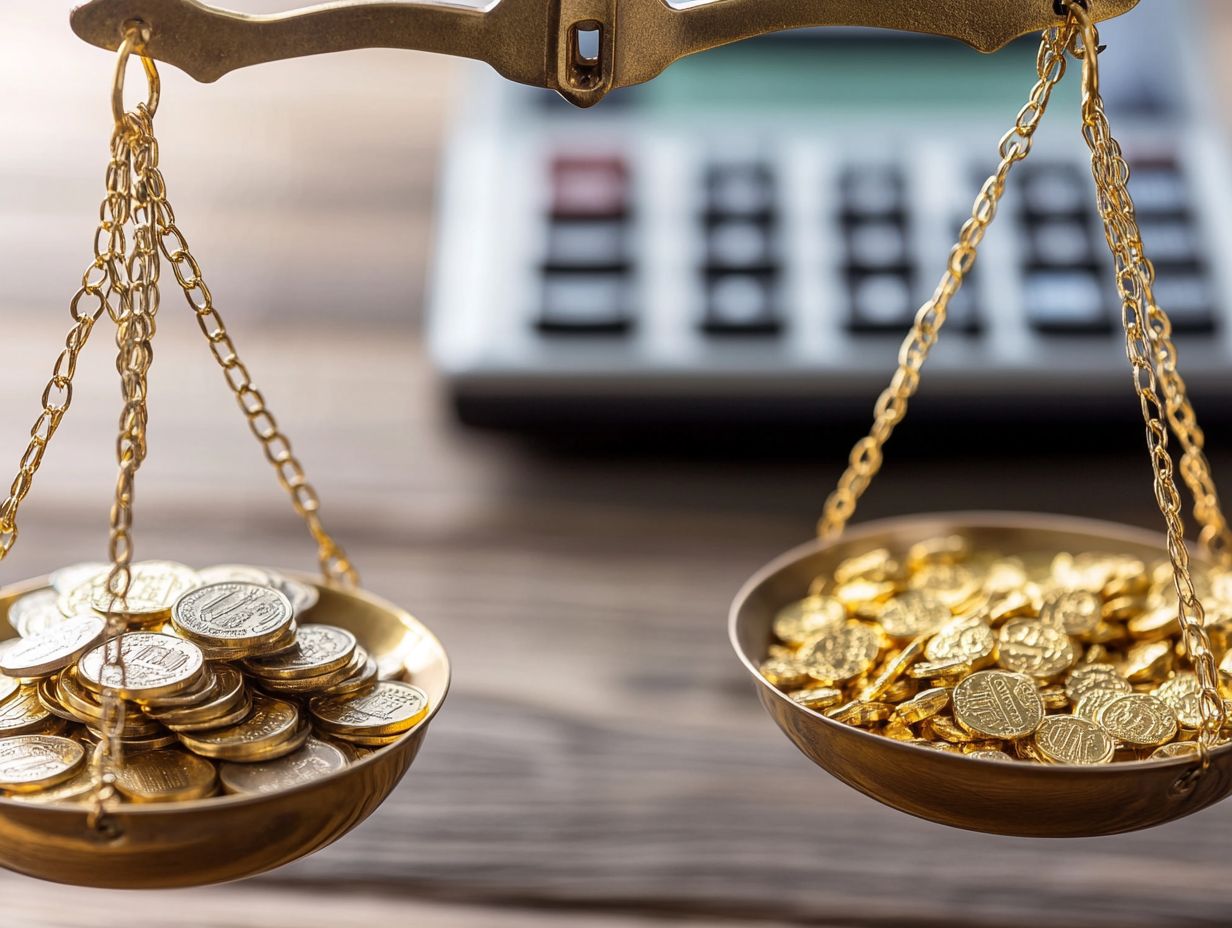
Exploring innovative methods of revenue generation could pave a promising path forward, steering clear of the negative repercussions associated with taxing precious metals. Consider potential alternatives such as implementing transaction fees on the buying and selling of precious metals, along with incentives for investing in precious metal ETFs.
By forging strategic partnerships with financial institutions, you could establish a platform for peer-to-peer trading of precious metals. This would not only enhance market accessibility but also foster broader participation.
Another compelling approach might involve developing educational programs that enlighten potential investors about the benefits and risks tied to precious metal investments. This would promote knowledge-based decision-making and enable investors to navigate the market with confidence.
Focusing on these new revenue streams can stabilize the market. This will encourage long-term investment that benefits both you and the economy.
Addressing Wealth Inequality Through Different Approaches
Addressing wealth inequality with various approaches can yield a balanced solution while avoiding the complexities of taxing precious metals. By investing in social programs and public initiatives funded by alternative revenue sources, we can effectively direct economic benefits toward marginalized communities and create a stable environment for precious metals investment.
This strategy fosters inclusiveness and stimulates economic growth by creating jobs and enhancing educational opportunities. Implementing policies that encourage companies to help the community allows profits to be redirected toward community development, ensuring that every citizen benefits from the financial ecosystem.
Building partnerships between public and private sectors sparks innovative solutions that help bridge the wealth gap. As these methodologies are adopted, improved access to resources and opportunities fosters a more equitable economic landscape, crucial for long-term stability and prosperity.
Frequently Asked Questions
What are the pros of taxing precious metals?
1. Increase government revenue: Taxing precious metals can bring in additional revenue for the government, which can be used for public services and infrastructure projects.
2. Fair distribution of wealth: Taxing these metals allows the government to redistribute wealth from wealthy individuals to areas of society in need of support.
3. Stabilizes the economy: Taxing precious metals can reduce their volatility, positively impacting the overall economic stability of a country.
What are the cons of taxing precious metals?
1. Decreased investment: Taxing precious metals may discourage investment, seen as an additional financial burden, which risks decreasing investment.
2. Black market risks: High taxes may lead to a black market for buying and selling these metals, resulting in lost revenue for the government and a lack of market regulation.
3. Negative industry impact: Taxing precious metals could raise production costs for industries that use them, making them less competitive in the market.










